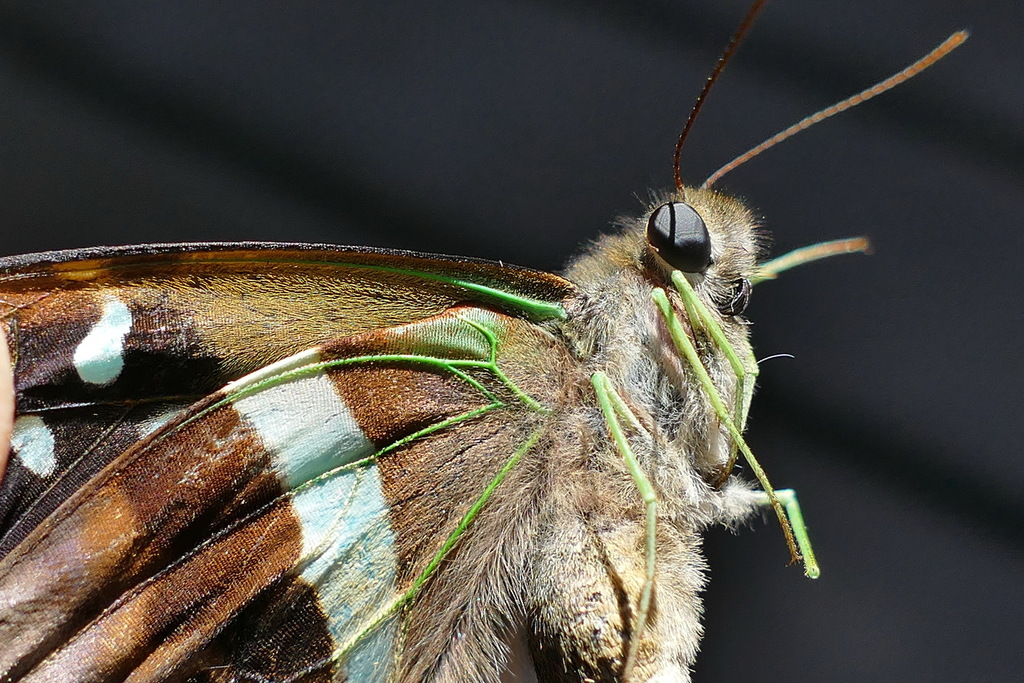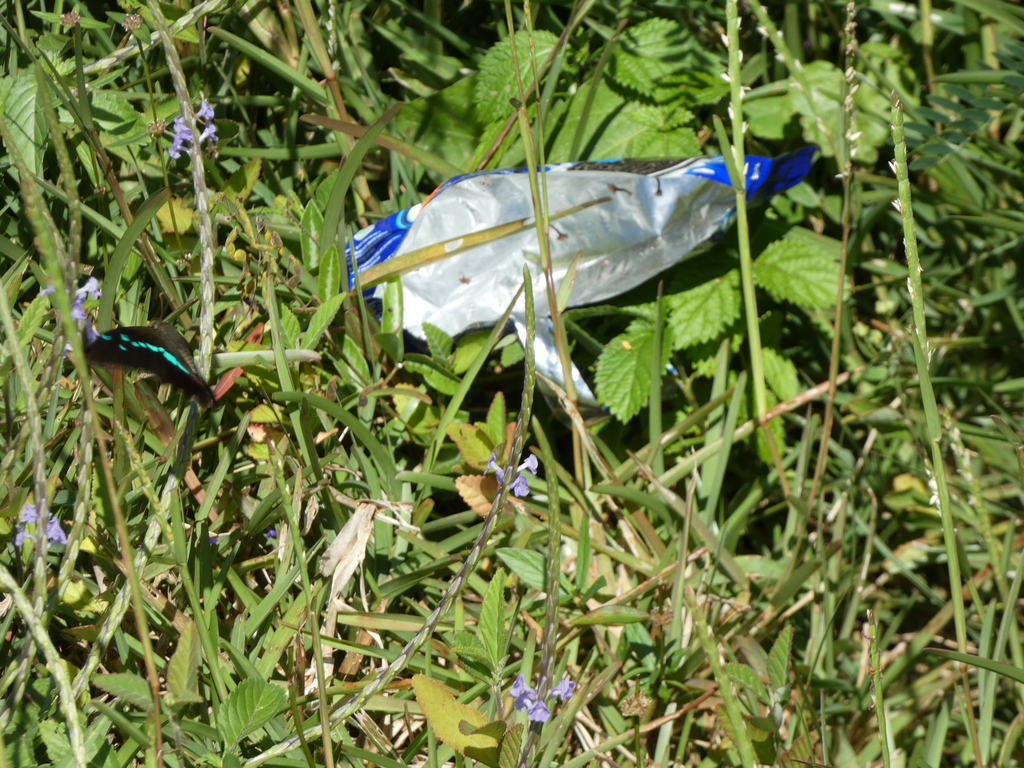[Due to an error, this post went live last week. It is appearing on schedule now.]
This week's butterfly is not known to be threatened, but has always been rare. Its habitat is limited to New Caledonia. It has been extensively documented as a curio, and Google shows its name having been given to a porn video in a series named after exotic butterflies. It has not been extensively studied in a scientific way. For most people, apparently, this butterfly is just too far out of their way.
Photo by Jlamy Nc. The subject looks fat because she's about to flit back into the woods and unburden herself of some eggs.
Photo by Jacques Lamy (of New Caledonia), posted at a different site. This is one of the Swallowtail species in which the male's wings are covered with cells that look more like fur than like scales along the sides near the body.
Photo by Benoit_Henry. The underside of the wings can resemble some of the multicolored species in this genus, and may be further distinguished by bright lime green veins and legs.
The wingspan seems to be between two and three inches. In many Swallowtail species larger individuals with lower-contrast colors are female. To some extent this is reported to be true for Graphium gelon, with one source giving the average male's wingspan as 5.5 cm and the average female's as 6 cm, but photographs of couples do not consistently show a gender difference. The ones that lay eggs are female.
Photo by Kaithefishguy. This pair show gender difference in the way that's typical, but not universal, for many Swallowtail butterflies. In several species, some females look different from males, some look similar--and in some species both sexes are variable.
Photo by Val91. Some tropical Graphiums seem to be fascinated by bright blue or turquoise-colored objects. Does the color remind them of fresh water, or of their species' wings? Most of the flowers they pollinate are not blue. Most digital photos of Graphium gelon sipping flower nectar feature white, yellow, and pink or orange flowers...
As these two photos by Jlamy show, they sometimes visit a flower that combines all four of those colors, plus wine red...
...though this photo by Tomdriscoll, and others, show that Graphium gelon also likes some flowers with a pale lavender color.
They seem very energetic; an alternative species name proposed for them was megasthenes, Greek for "big healthy." (Walter Rothschild declared that megasthenes, the name originally proposed for New Caledonian Graphiums with much wider blue stripes than other gelon, was not even a subspecies: "This species," meaning gelon, "is so variable that hardly two specimens are identical.")
Butterflies are incapable of hurting anyone who doesn't swallow them, but some butterflies enjoy playing "chicken" (play-fighting) and Graphium gelon is said to be one of the most aggressive game players. They seem especially to like to fly at a slightly smaller Swallowtail locally nicknamed le Papillon Bleu--Green Butterflies chasing Blue Butterflies off their territory. Male Graphium gelon like to claim a high point as their territory and fly around it, chasing other butterflies away. Presumably this activity catches the females' interest, although females don't join males on their territory but go back into the woods to lay their eggs. Like most Graphiums, female gelon spend a great deal of time selecting a new leaf on which to place each egg.
The butterfly and a host plant, Annona squamosa, are featured on a postage stamp, for sale to collectors:
The butterfly also appears in a picture book for French-reading children. The digital image of le Papillon Vert is easier to enlarge, as needed, on this page:
https://www.cie.nc/images/sampledata/ressources/fiches_nature_faune_terrestre/pdf/graphium_gelon.pdf
Each female lays about a hundred eggs...by ones. The eggs look like tiny beads with a pale green color. They hatch within a week, often in just four days. Hatchling caterpillars have dark skins, which they soon shed in favor of drab skins, then brown, and finally green.
Caterpillar photos by Adurbano. This baby, observed in late September, has more of a reddish color rather than black, and a smoother skin overall, than many Graphiums in the first or second instar.
They resemble other Graphium larvae but seem to have a much clearer green, less yellow, color than most of the Graphiums. The tropical plant they are eating is in the genus Cryptocaria. Hernandia cordigera is another plant they can eat.
Pupae are said to be "usually" pale green, spindle-shaped with that dead leaf look other Graphium pupae show. The butterflies pupate for 14 to 16 days.
After eclosion, adult butterflies fly for 7 to 10 days. Primarily pollinators, they help to pollinate many kinds of wildflowers.










No comments:
Post a Comment